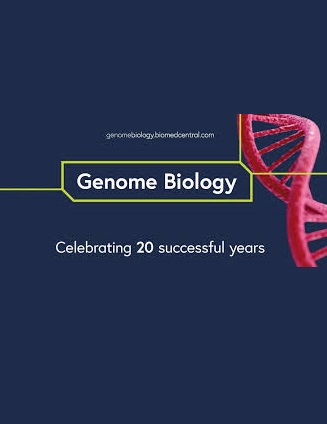A dynamic regulome of shoot-apical-meristem-related homeobox transcription factors modulates plant architecture in maize
IF 10.1
1区 生物学
Q1 BIOTECHNOLOGY & APPLIED MICROBIOLOGY
引用次数: 0
Abstract
The shoot apical meristem (SAM), from which all above-ground tissues of plants are derived, is critical to plant morphology and development. In maize (Zea mays), loss-of-function mutant studies have identified several SAM-related genes, most encoding homeobox transcription factors (TFs), located upstream of hierarchical networks of hundreds of genes. Here, we collect 46 transcriptome and 16 translatome datasets across 62 different tissues or stages from the maize inbred line B73. We construct a dynamic regulome for 27 members of three SAM-related homeobox subfamilies (KNOX, WOX, and ZF-HD) through machine-learning models for the detection of TF targets across different tissues and stages by combining tsCUT&Tag, ATAC-seq, and expression profiling. This dynamic regulome demonstrates the distinct binding specificity and co-factors for these homeobox subfamilies, indicative of functional divergence between and within them. Furthermore, we assemble a SAM dynamic regulome, illustrating potential functional mechanisms associated with plant architecture. Lastly, we generate a wox13a mutant that provides evidence that WOX13A directly regulates Gn1 expression to modulate plant height, validating the regulome of SAM-related homeobox genes. The SAM-related homeobox transcription-factor regulome presents an unprecedented opportunity to dissect the molecular mechanisms governing SAM maintenance and development, thereby advancing our understanding of maize growth and shoot architecture.与嫩枝顶端-茎髓相关的同源转录因子的动态调控组调节玉米的植物结构
植物的所有地上组织都来自芽尖分生组织(SAM),它对植物的形态和发育至关重要。在玉米(Zea mays)中,功能缺失突变体研究发现了几个与 SAM 相关的基因,其中大多数编码同源转录因子(TFs),位于数百个基因的分层网络的上游。在这里,我们从玉米近交系 B73 的 62 个不同组织或阶段中收集了 46 个转录组和 16 个转译组数据集。我们通过机器学习模型,结合tsCUT&Tag、ATAC-seq和表达谱分析检测不同组织和阶段的TF靶标,为三个与SAM相关的同源染色体亚家族(KNOX、WOX和ZF-HD)的27个成员构建了动态调控组。这一动态调控组显示了这些同源染色体亚家族不同的结合特异性和辅助因子,表明了它们之间和内部的功能差异。此外,我们还构建了一个萨姆(SAM)动态调节组,说明了与植物结构相关的潜在功能机制。最后,我们生成了一个 wox13a 突变体,该突变体提供了 WOX13A 直接调控 Gn1 表达以调节植物高度的证据,从而验证了 SAM 相关同源体基因的调控组。SAM相关同源框转录因子调控组为我们提供了一个前所未有的机会来剖析调控SAM维持和发育的分子机制,从而促进我们对玉米生长和嫩枝结构的了解。
本文章由计算机程序翻译,如有差异,请以英文原文为准。
求助全文
约1分钟内获得全文
求助全文
来源期刊

Genome Biology
Biochemistry, Genetics and Molecular Biology-Genetics
CiteScore
21.00
自引率
3.30%
发文量
241
审稿时长
2 months
期刊介绍:
Genome Biology stands as a premier platform for exceptional research across all domains of biology and biomedicine, explored through a genomic and post-genomic lens.
With an impressive impact factor of 12.3 (2022),* the journal secures its position as the 3rd-ranked research journal in the Genetics and Heredity category and the 2nd-ranked research journal in the Biotechnology and Applied Microbiology category by Thomson Reuters. Notably, Genome Biology holds the distinction of being the highest-ranked open-access journal in this category.
Our dedicated team of highly trained in-house Editors collaborates closely with our esteemed Editorial Board of international experts, ensuring the journal remains on the forefront of scientific advances and community standards. Regular engagement with researchers at conferences and institute visits underscores our commitment to staying abreast of the latest developments in the field.
 求助内容:
求助内容: 应助结果提醒方式:
应助结果提醒方式:


